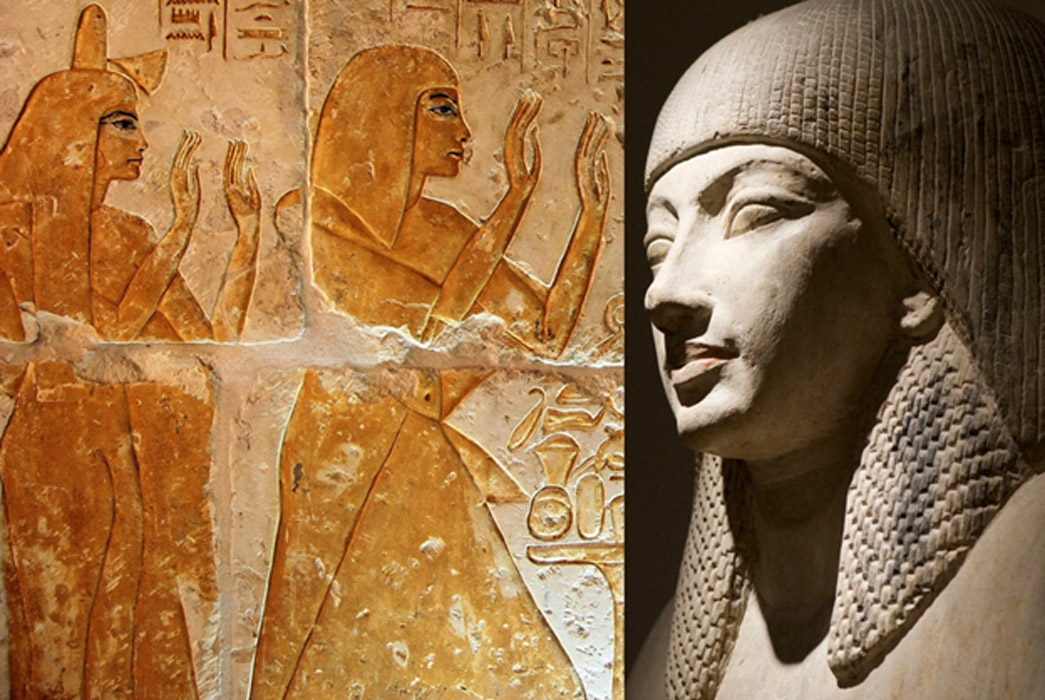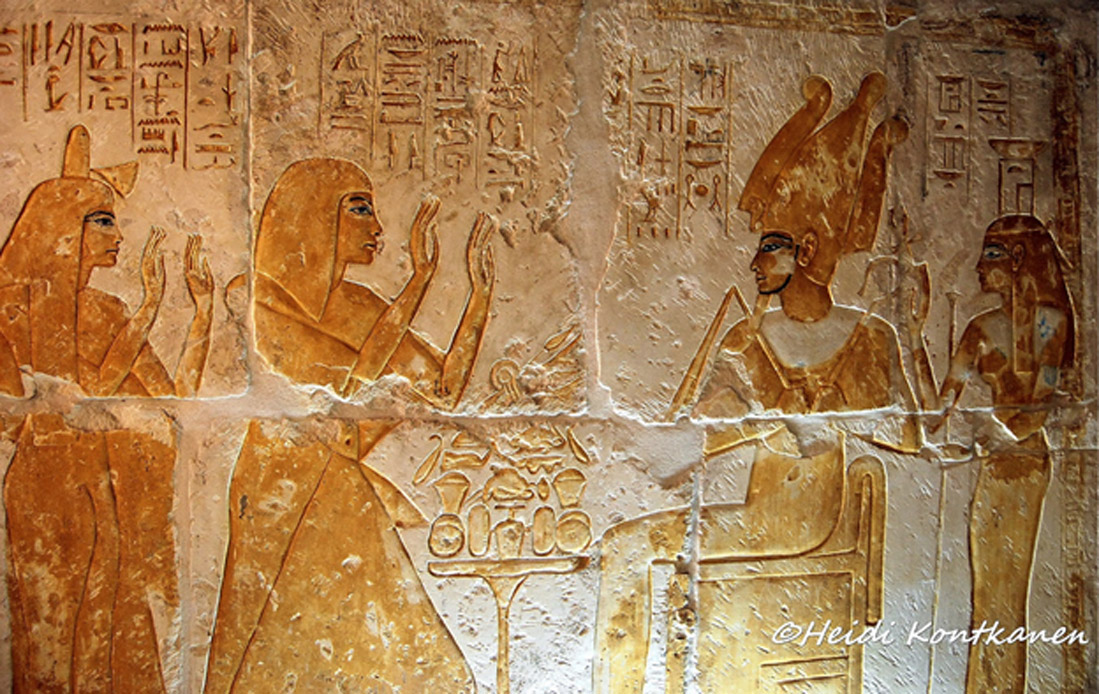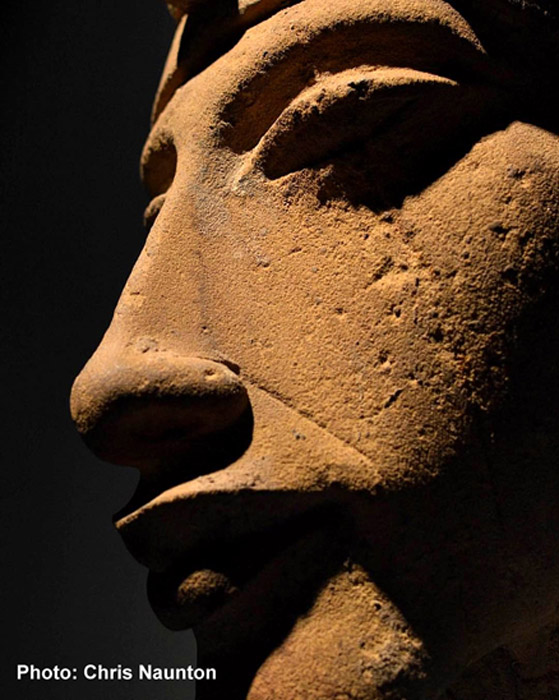
The Many Mysteries of Maya: On the Trail of Tutankhamun’s Valued Courtier–Part I
The Amarna Period brought to fore many interesting personages, especially from the ruling disposition. While éminence grise Aye and the generalissimo Horemheb became pharaohs after the death of Tutankhamun, the last scion of the Sun Family; it was Maya, a nobleman, who played a pivotal role during the twilight years of the Eighteenth Dynasty by honoring crown and country through the vital posts he held. An old hand, he knew well how to play his cards to remain in favor in the New Kingdom royal court.

No cost was spared in fashioning a sumptuous resting place for Maya and his wife Merit. The couple adores Osiris and Nephthys in this stunning gold painted relief in their Memphite tomb.
MAY AND MAYA: A QUESTION OF IDENTITY
Maya was one of the elite, the third most powerful man in Egypt after the King and the Vizier; and as the Treasurer and Overseer of the Place of Eternity (Royal Necropolis), he served successive pharaohs: Tutankhamun, Aye and Horemheb. However, speculation abounds that he began his career during the reign of Amenhotep III. This assumption is based on the tenuous possibility that he may be the namesake royal scribe attested in Malqata in Regnal Year 34 of Nebmaatre. Therefore, a section of Egyptologists argue that Maya most certainly functioned under Akhenaten as well.

Probably a cult statue, this detail of a vibrant quartzite sculpture depicts an able-bodied, sled-borne image of a striding Amenhotep III wearing the Double Crown. It was found in the famed Luxor Cachette in 1989 on the western side of the king’s colonnaded solar court. Luxor Museum.
Here again a courtier, May, who built a large tomb (EA14) in the new capital city Akhetaten is cited as ‘Maya’ in an earlier avatar. Reflecting on the literary contents of this sepulcher, Norman de Garis Davies writes: “The inscription... which attempts to put into words May’s loyal attitude to the King, is, despite all grandiloquence, a description of his career.”
“The Bearer of the Fan on [the right hand of the King] whom the King of the South hath enlarged whose sustenance (or “whose Ka”) the Sovereign hath provided, one beloved by his Lord every day; one whose happiness comes (though) old age arrives and whose body is hale (though) time passes; one great in favour and happy in [honours?]; one who followed [his] lord and was the companion (?) of his feet for life, whose love is stable; the Royal Scribe, Scribe of recruits. Overseer of the house of Sehetep-Aten, Overseer of the house of Ua-en-ra in On, Overseer of the cattle of the temple of Ra in On, [Overseer] of all [the works] of the King, Overseer of the soldiery of the Lord of the Two Lands, May.”

The beautifully sculpted face of one of Akhenaten’s colossal statues that was purposefully wrecked at Karnak Temple, when the shrines and sanctuaries he had dedicated to the Aten were dismantled during the Amarna backlash. Luxor Museum.




